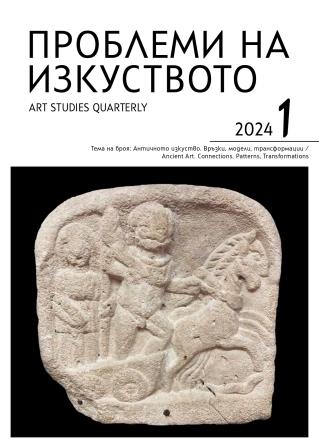Воини и принцеси? За апликациите за конска сбруя от погребенията при Дуванлии и Големаните
Warriors and Princesses? On the Horse Harness Appliqués from the Burials of Duvanlii and Golemanite
Author(s): Ruslan StoychevSubject(s): Fine Arts / Performing Arts, Visual Arts, History of Art
Published by: Институт за изследване на изкуствата, Българска академия на науките
Keywords: Thrace; Classical period; bronze appliqués; horse harness Scythia; animal style; elite
Summary/Abstract: The study focuses on bronze appliqués for horse harness found in burials dated to the last third of the 5th century BC near the villages of Duvanlii, Plovdiv region and Golemanite, Veliko Tarnovo district. These examples belong to the few that come from clear contexts. Furthermore, their importance is emphasized by the suggestion that it was objects such as these ones that most likely provided the ground for the development of the animal style in the Thracian visual culture. Analysis of their form, style, and iconographic features, as well as comparison with analogous examples from Scythia leads to the identification of their most probable origin, which coincides with one of the hypotheses about the impulses that later led to the emergence of new elements in the local artistic tradition. The stylistic correspondence and suggested comparanda distinguish the appliqués from the Duvanlii and Golemanite as fully finished products which bear the features of a natural developmental process that took place in a foreign cultural environment. Since their iconographic characteristics are very close to those of the established prototypes, their sudden appearance in Thrace seems more like a reflection ofsome historical events, the result of a certain type of behaviour on the part of a social group, or both. Considering the finding contexts of the appliqués, they support the idea that the lavish decoration of the horse corresponded to certain socially superior segments of the population. Since these two burials share enough distinct characteristics to indicate that they belonged to members of a particular social group, it is very likely that in this system of signs, the horse appliqués were also meant as manifestations of status, replacing the riding horse, which in archaic societies was itself a demonstration of prestige.
Journal: Проблеми на изкуството
- Issue Year: 2024
- Issue No: 1
- Page Range: 4-11
- Page Count: 8
- Language: Bulgarian
- Content File-PDF

